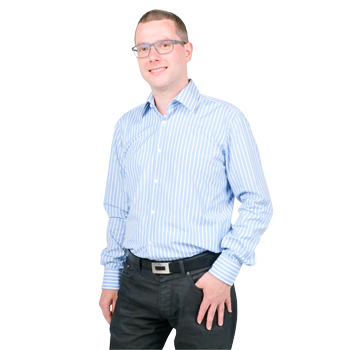In the quest to improve their planning facilities, H&S concluded that no existing product met the requirements. The same situation was also discussed at Den Hartogh Liquid Logistics. Both companies have opted for a tailor-made solution based on their own situation. The first experiences are positive. Both the H&S Group and Den Hartogh Liquid Logistics went live with an APS (Advanced Planning and Scheduling) for automated intermodal journey planning. This is the result of a unique collaboration process in which InforIT from Oss and CQM also participated.
About H&S and Den Hartogh
The H&S Group is a multimodal logistics service provider for the bulk transport of liquid foodstuffs for the food industry. Within the group, H&S Transport is involved in tanker transport. H&S Foodtrans provides intermodal services with tank containers and a network of its own vehicles and covers all of Europe and Russia. With a fleet of approximately 1,000 load-carrying units, the H&S Group is one of the largest multimodal players in the liquid food market. Den Hartogh Logistics is a Logistics Service Provider for the chemical industry. The Den Hartogh Liquid Logistics division is specialized in intermodal bulk transport of liquid chemicals, both intermodal and by road. Transport takes place in single or multi-compartment load-carrying units. Den Hartogh has a fleet of 3,000 tanks. Den Hartogh and H&S have shared a building in Oss since Den Hartogh took over the chemical branch and H&S the food division from Eurovos in 2001.
No product met the requirements
For the planning, H&S used Transfusion, a TMS (Transport Management System) from InforIT. There was a need to further improve this system and to supplement it with more planning facilities. Feike Molema, Business Unit Director at H&S Logistic Services: “We quickly came to the conclusion that no existing product met our requirements. We preferred to have an APS fully integrated into the TMS. For us, Transfusion actually functions as an ERP solution (Enterprise Resource Planning) and thus supports all processes within our organization. For that reason, it is not desirable to introduce a stand-alone planning application.” As a second limitation, Molema points to the special nature of bulk transport of liquid food. All kinds of specific restrictions apply to this that must be included in the planning. “Existing standard planning applications also offered no solace in this respect,” says Molema.
That requires customization
From the desire to integrate the APS with Transfusion, collaboration with InforIT was the obvious choice. Discussions then took place with several APS suppliers about the possibilities of building in extra smartness in the form of algorithms. Adding these planning algorithms makes it possible to arrive at an optimal planning. In the end, the choice fell on CQM. Molema: “CQM distinguishes itself by offering customization, based on our situation.” Around that time, Den Hartogh also joined the collaboration between H&S, InforIT and CQM. Den Hartogh had been looking for an APS and active decision support system for a long time to support their planning processes. Den Hartogh also uses Transfusion and for them integration of the APS with Transfusion was also an absolute requirement.
Planning tank transports is complex
Mark Warner, Group Strategic Director at Den Hartogh: ”Planning our tank transports is very complex. For example, specific requirements apply to the tank container in which it can or may be transported for each load. And driving with empty containers must of course be kept to a minimum. In addition, there are all kinds of sequential restrictions, such as 'after using a tank container for the transport of substance A, the same tank may not be used for substance B'. In fact, a number of loads always have to be planned in advance.”
Planning in two steps
Within the APS that has now been developed, the planning process takes place in two steps. First, a multi-day material planning (MMP) is made. For each cargo, it is checked which tank container or trailer is to transport the cargo. It is also determined which freight is transported by water, rail or road. The essence is that chains of tank movements are planned, instead of single trips. All kinds of specific requirements apply to the containers to be used. Think of limitations on freight, volume, weight, temperature and the like. All these requirements are included within the MMP. Many of these requirements have already been mapped out at the very beginning of the project, through an extensive inventory by the planners. Still, after seeing the first results, many more requirements were added. There appeared to be many more implicit rules that led to the rejection of the first results of the multi-day material planning. A process that, after a number of successes, has now led to all limitations being accommodated in the algorithm. The second step in the planning process concerns the 'tractor-driver' planning. With the support of the algorithms, a truck and driver are added to the chains defined in the MMP.
Wider planning horizon, route choice and use of equipment
In the meantime, both companies have been working satisfactorily with the new planning system for some time. Molema: “We have a broader planning horizon, a better route choice and a better use of our equipment. An additional effect is that we have our information in order much better. To feed the APS it was necessary to have reliable quantitative data on things like travel times, waiting times, cleaning times. We have also made progress there.” Mark Warner van Den Hartogh: “The introduction of this APS is a first step. It offers the opportunity to look at our activities and business in a completely different way. Of course it leads to higher productivity and better execution. An APS is absolutely necessary to keep the planning process feasible for the planners with increasing size and complexity. But the big advantage is that we can use it proactively. For example, to determine the value of transport questions for the entire process and to make targeted use of this in tenders. In that regard, we have only just started and the collaboration with CQM will continue!”
Do you also have a complex planning puzzle to solve?
Please contact Geert Teeuwen.
Publication and/or duplication of texts/images is only permitted following explicit permission from CQM.
Photo credits: Den Hartogh image bank.


